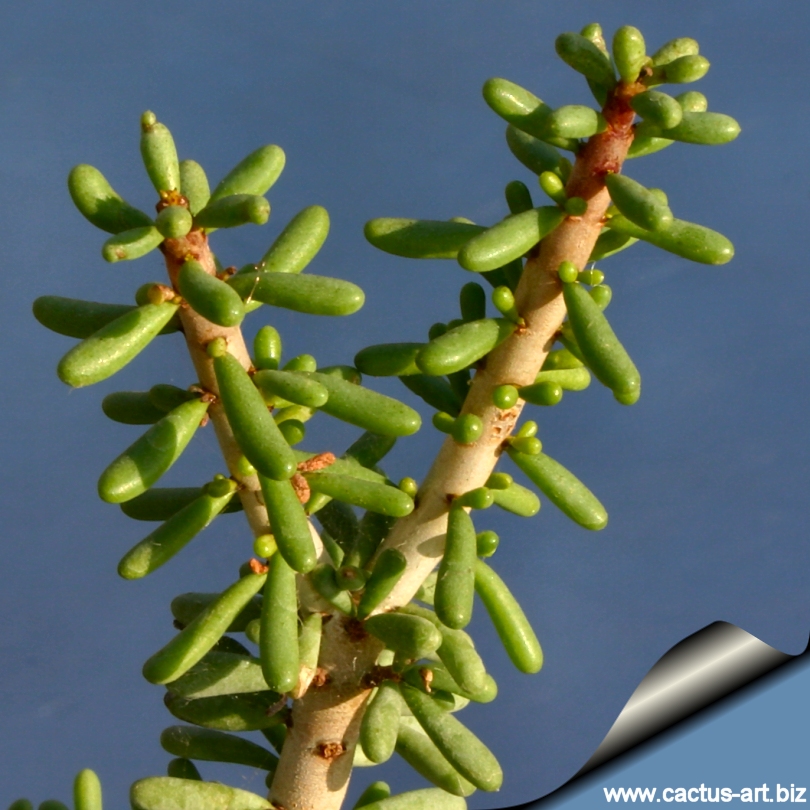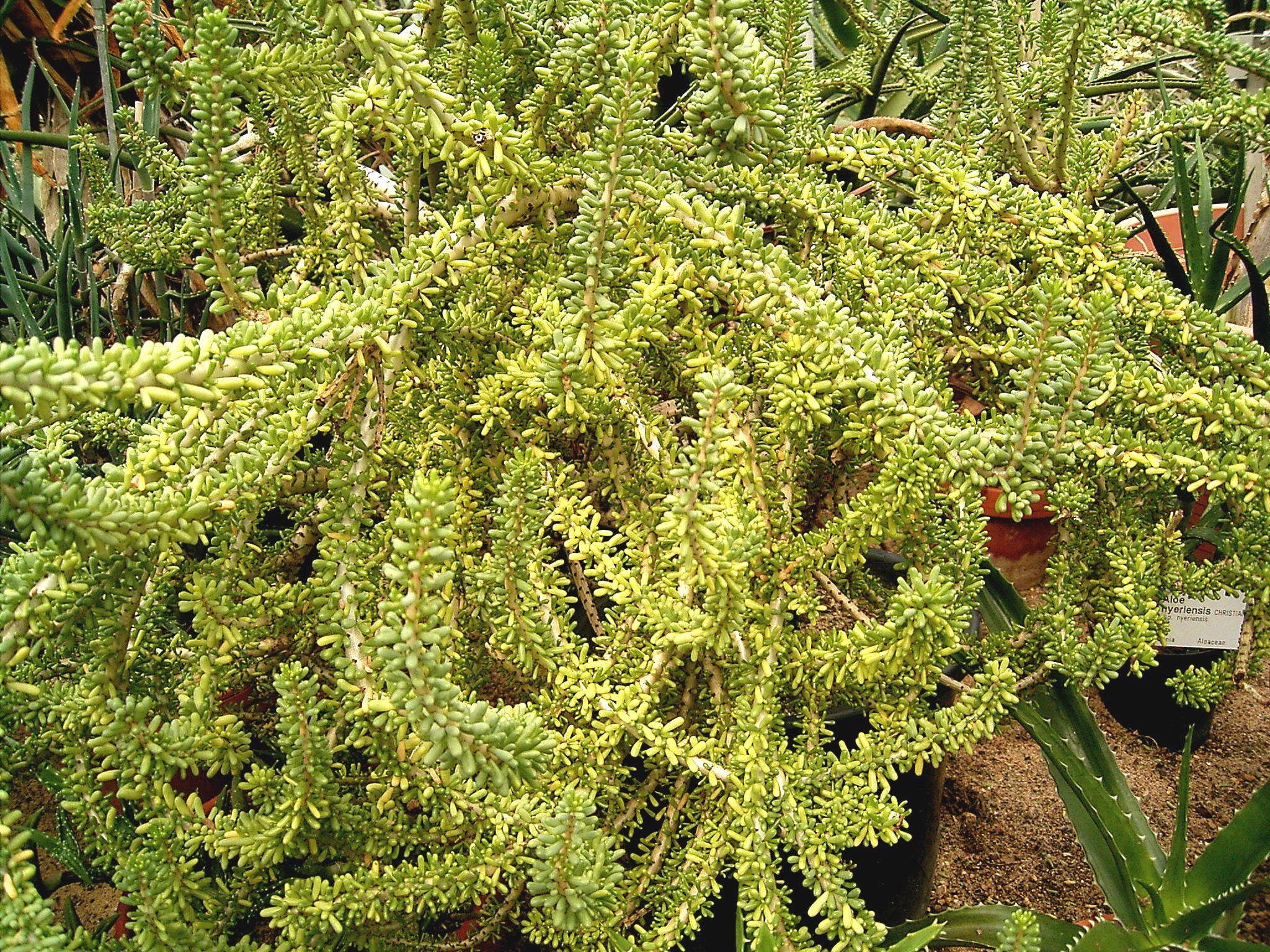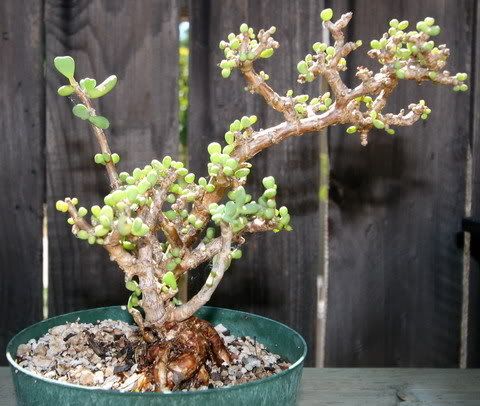Ceraria
Ceraria namaquensis
Ceraria is a plant genus of the family Didiereaceae within the order of clove -like ( Caryophyllales ).
Description
There are bald and more or less deciduous shrubs with dioecious or in some species with hermaphrodite flowers. The flat to terete and small leaves are opposite or whorled and fall off before the onset of flowering.
The flowers stand side of the engine and take 1-6 tiny individual flowers. It also forms two short persistent sepals. The five petals are colored white to deep pink and are free. The flower has five stamens, which are transformed into the female flowers to staminodes. The pollen are tricolpate. The Upper constant ovary is triangular and consists of two to three carpels with one ovule. The single-leaf at the beginning fruits are berry-like and provided in a dried state with one to three perennial wings.
The chromosome number is 24
Dissemination
The species of the genus are widespread in Namibia and South Africa.
System
The genus was erected in 1912 by Henry Pearson and Edith Stephens. The type of plant, Portulacaria namaquensis was determined as lectotype in 1987 by Nyananyo.
The genus contains six species:
- Ceraria carrissoana Exell & Mendoca
- Ceraria fruticulosa H.Pearson & Stephens
- Ceraria gariepina H.Pearson & Stephens
- Ceraria longipedunculata Merxm. & Podlech
- Ceraria namaquensis (special ) H.Pearson & Stephens
- Ceraria pygmaea ( Pillans ) G.D.Rowley
Swell
- G. D. Rowley: Ceraria. In: Urs Eggli (ed.): Succulents Encyclopedia. Volume 2 Dicotyledons ( dicots ), Ulm, Stuttgart 2002, ISBN 3800139154, p 405










